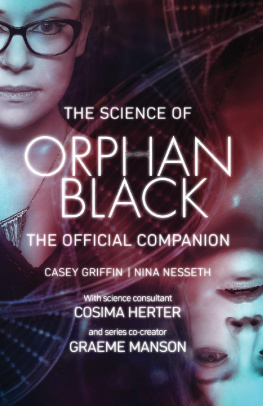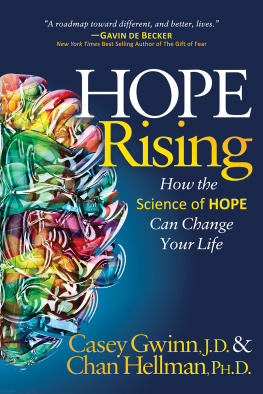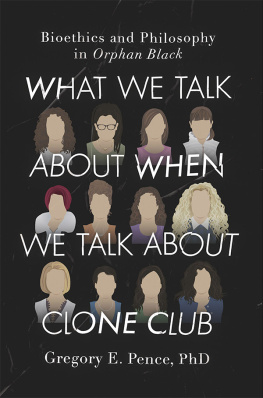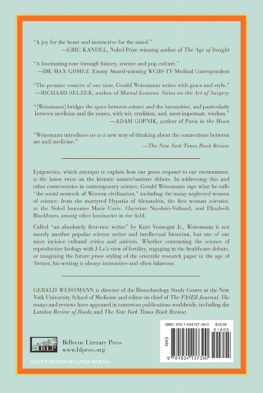TRY ANOTHER GREAT READ FROM ECW PRESS...
Investigating Sherlock An essential companion to the hit BBC show
Hes been depicted as a serious thinker, a master of deduction, a hopeless addict, a bare-knuckle fighter. His companion is a bumbler, a sympathetic equal, someone helpless in the face of his friends social inadequacies. Sherlock Holmes and John Watson remain the most-adapted fictional characters of all time. In 2010, when Benedict Cumberbatch and Martin Freeman stepped into the roles, they managed to meld many previous incarnations into two glorious performances. Over Sherlock s first three seasons, the Emmy-winning series has brought new life to stories almost 130 years old and, with its Holmes and Watson for the 21st century, created a worldwide fandom unlike any other.
Investigating Sherlock, written by bestselling author Nikki Stafford, examines each episode through in-depth and fun analysis, exploring the character development and cataloguing every subtle reference to the original stories. With biographies of Cumberbatch and Freeman, as well as Arthur Conan Doyle, Investigating Sherlock is the ultimate guide to the great detective.
ECW digital titles are available online wherever ebooks are sold. Visit ecwpress.com for more details. To receive special offers, bonus content and a look at whats next at ECW, sign up for our newsletter!
COSIMA
I am going to get you so baked one day.
(1.06 Variations Under Domestication)
Throughout Orphan Black, we witness the resident geek monkey smoking her fair share of weed she even starts growing it in her underground lab in season four. Although Cosima starts the series as a pleasure smoker, she eventually uses the marijuana that she grows to mitigate the symptoms of the clone disease. Many peple living with chronic illnesses use marijuana to help ease pain, and the treatment is spreading as legalization progresses across the United States and Canada.
COSIMA
We have a little crop right there. Totally organic.
(4.02 Transgressive Border Crossing)
Marijuanas key chemicals of interest for medicinal purposes are cannabinoids, the most well known of which is THC (delta-9-tetrahydrocannabinol). THC has mind-altering properties, which is of interest to recreational users of marijuana, as well as therapeutic properties, such as the ability to reduce pain, nausea, and inflammation, and the ability to increase appetite. Another cannabinoid found in marijuana, cannabidiol, can be used to treat seizures, pain, and inflammation and does not affect the users state of mind. There is no hard and fast definition for medical-grade marijuana, and anyone using marijuana for healing purposes can be considered to be using therapeutic marijuana. Typically, therapeutic marijuana has a high potency and is organically grown, not mixed with any other chemicals or drugs.
Smoking marijuana allows for the quickest absorption of cannabinoids. The inhaled smoke enters the lungs and the chemicals then flow into the bloodstream, where they are quickly transported to other organs of the body, including the brain. Eating cannabinoids allows for slower absorption but is still effective. Once the THC is in the brain, it acts on various receptors, causing the user to feel high as well as experience the various therapeutic effects. The chemicals bind to receptors on the neurons in the brain, causing these neurons to fire that is, release chemicals that further interact with cells throughout the brain triggering a feeling of euphoria. The neurons continue to fire and maintain the high until the cannabinoids are cleared and the receptors are freed, ending the neuronal response.
Clinically, the most successful therapeutic use of marijuana is for nausea relief. Medical marijuana is a common treatment for chemotherapy patients and people with late-stage AIDS. Currently, there are medications on the market that are cannabinoids in pill form, commonly prescribed to cancer patients. However, this treatment is relatively short-term and requires frequent repetitive use to be effective. Clinical trials have been held to test the effectiveness of THC on treating nerve pain and multiple sclerosis. While some results have been promising, there remain no drugs on the market containing THC, other than nausea relief pills.

Despite the lack of options available on the market, research has vastly expanded in terms of diseases that cannabinoids might effectively treat. Epilepsy, Crohns disease, and cancer are the most promising candidates for cannabinoid treatment, but research covers a plethora of diseases, including Alzheimers disease, PTSD, lupus, and glaucoma. As legalization of marijuana spreads, research, clinical trials, and commercially available medications will continue to expand and produce results.

For Cosima, aside from the pleasures she has always enjoyed, marijuana helps ease the nausea and pain associated with the clone disease. Although her worst symptoms include lung polyps and coughing up blood, smoking is probably most effective for her due to the speed at which the chemicals enter her bloodstream and begin to ease her pain. The lobes of the lungs are made up of little sacs, known as alveolar sacs, where gas exchange takes place with every breath. At these locations, the alveolar sacs are directly next to blood vessels, which facilitates efficiency in the gas exchange. This proximity to the blood vessels is why cannabinoids can enter the bloodstream so quickly. If Cosima were to ingest marijuana (by baking it into a brownie, for example), the cannabinoids would have to travel down the esophagus, through the stomach, where the food and drug would be digested, and then into the intestines, where they could finally be taken up by the bloodstream.
Although Cosima partakes in this therapy illegally, the benefits are worth the risk; her disease is at the stage where even the smallest bit of relief seems monumental. After all, as she discusses with Mrs. S in season fours Transgressive Border Crossing, she can no longer use Kiras bone marrow; while testing the vectors for the gene therapy, bone marrow transplants would alter any potential effects of the tests, and therefore interfere with the results. Cosima also mentions that the weed helps her with her appetite, due to the cannabinoids acting to promote hunger. (Recreational marijuana users refer to this as the munchies.) A good appetite is necessary for keeping Cosimas strength and health at their highest standards while she is stem cell treatmentfree and testing therapies. Therefore, her only means of managing her symptoms and keeping her in the best state is through the use of her private stash of medical marijuana.
CLONE CLUB Q&A
Why is helium way funnier than polonium?
















